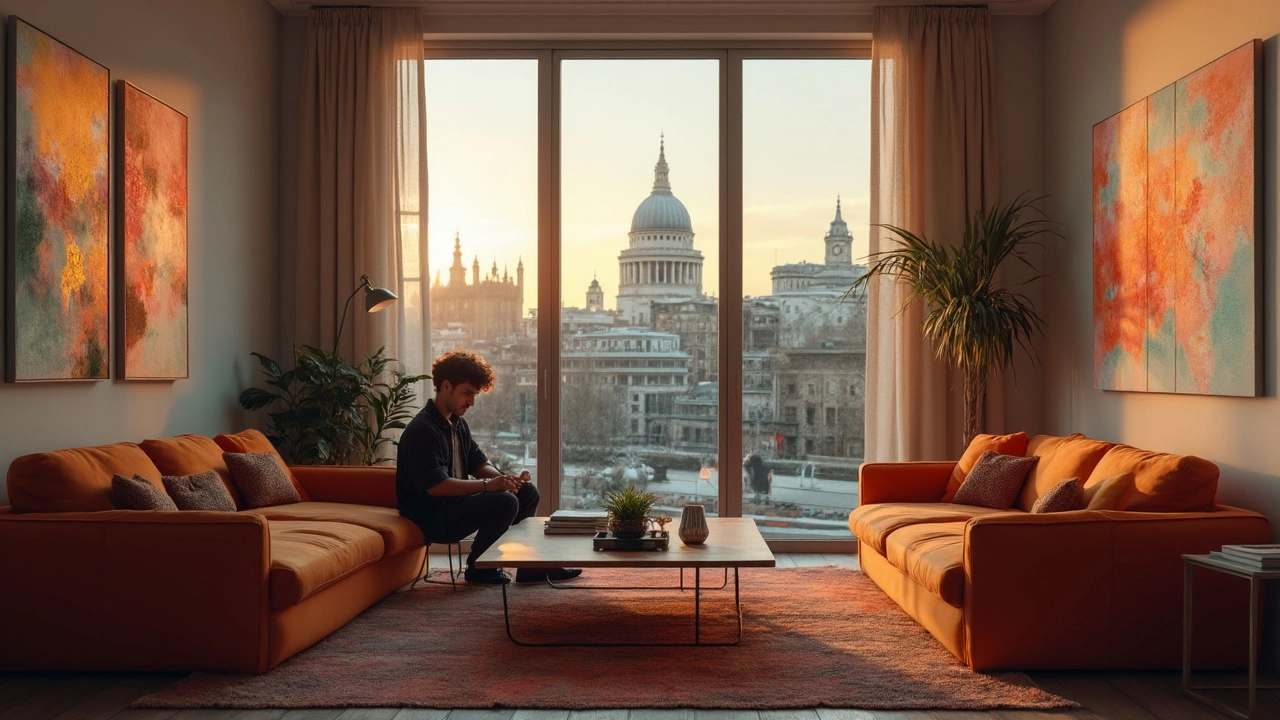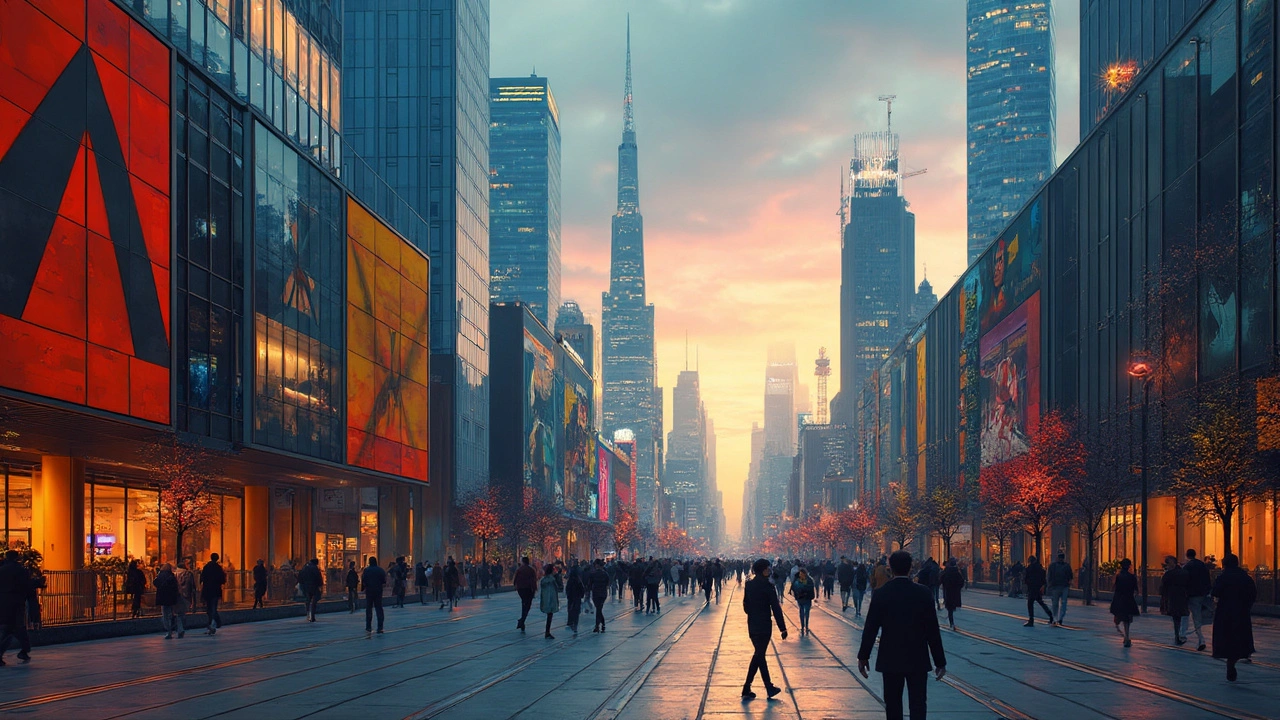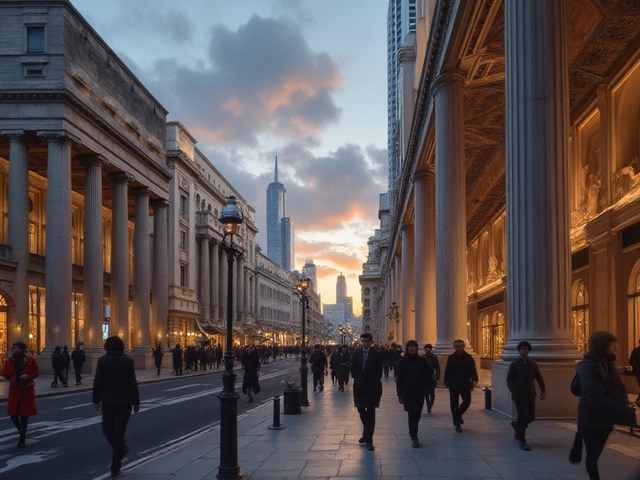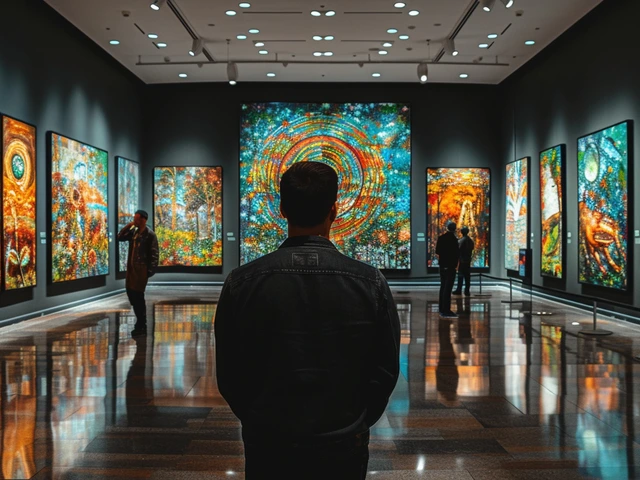Ever noticed those bold, black lines paired with simple, vivid colors like red, blue, and yellow? That's De Stijl for you. This Dutch art movement, which kicked off in 1917, wasn't just about pretty pictures. It pushed for a total design transformation across painting, architecture, and more. When you think straight lines and a lack of clutter, think De Stijl.
So, why should we care today? Well, those minimalistic vibes you see in modern architecture or sleek smartphone designs? A lot of it traces back to De Stijl. Stripping things down to the essence was not just their style—it was a philosophy. Whether it’s designing a room or an app, understanding their core ideas can bring clarity and effectiveness.
Intrigued by its influence on your surroundings? Let’s dig into where it all started and how those early twentieth-century ideas left a punch. They did, after all, take 'less is more' to a whole new level.
- Origins and Principles
- Influence on Architecture
- Impact on Modern Art and Design
- Incorporating De Stijl Today
Origins and Principles
The De Stijl movement popped up in the early 20th century, right out of the Netherlands. Around 1917, a guy named Theo van Doesburg was keen on a new direction for art and threw together a group of artists who were all about simplifying visuals. Piet Mondrian, known for his iconic grids and primary colors, was one of the most famous names in this bunch.
They published a journal called, you guessed it, 'De Stijl,' which means 'The Style' in Dutch. This wasn’t just about liking squares and primary colors; the movement was almost a rebellion against the decorative, detailed styles of their time. They were into abstraction, geometry, and stripping things down to their bare essentials.
Core Principles
What made De Stijl so unique? Well, they had a few key things they believed in:
- Geometry: They loved rectangles, squares, and straight lines. It was all about that clean, uncluttered look.
- Primary Colors: Red, blue, and yellow were their jam, along with black, white, and grey for balance.
- Abstraction: Forget the clutter. They focused on the essential elements of form and color.
These ideas weren't just left in art journals and galleries. They started popping up in architecture, furniture, and even just the way people thought about space and design.
Considering how much our world loves minimalism now, it’s amazing (and kind of cool) to see how those ideas stayed relevant. The principles of De Stijl sneak into our daily lives more than we might realize, making the world a little more organized and visually soothing, don't you think?
Influence on Architecture
When it comes to architecture's sleek lines and geometric simplicity, thank the De Stijl movement for paving the way. One of the biggest names you should know here is Gerrit Rietveld. You might've heard of the Rietveld Schröder House in Utrecht, a real-life embodiment of De Stijl principles. Built in 1924, this house literally breaks down walls, featuring open spaces that can be transformed at a whim with sliding panels.
Rietveld Schröder House: An Iconic Marvel
Rietveld took De Stijl's aesthetic to heart, opting for primary colors and an impressive use of intersections and planes. It's like stepping into one of Piet Mondrian’s paintings, but in 3D. The house doesn't just look cool; it was designed for adaptability—something architects still envy and draw inspiration from today.
De Stijl's legacy in architecture extends beyond iconic homes. Many modern architects adopted the clean lines and functional form in skyscrapers and corporate offices. Ever noticed how a lot of modern buildings flaunt glass, steel, and minimalism? They've De Stijl’s philosophy to thank.
Beyond Residential: Skyscrapers and Public Spaces
Architects like Mies van der Rohe embraced De Stijl aesthetics in their massive glass and steel structures. ‘Less is more’ isn’t just a motto; it's a direct influence from this movement. The concept uses space economically while still making a bold artistic statement.
De Stijl architecture doesn’t just stop at buildings. It laid the groundwork for spatial design, influencing how we think about open-plan homes and offices. The ‘form follows function’ mantra means spaces are more than just pretty—they're practical and sustainable, which is super relevant in a world that's growing more eco-conscious by the day.

Impact on Modern Art and Design
It's wild how much De Stijl, with its geometric shapes and primary colors, still shows up in today's creativity and design. Ever walked into a building and thought, 'Wow, it's like being inside a Mondrian painting'? That's no accident.
Architecture's Echoes
For starters, architects grabbed De Stijl's clean lines and simple forms and ran with it. Take the Rietveld Schröder House in the Netherlands, designed by Gerrit Rietveld in 1924. It's like a De Stijl manifesto brought to life—moveable walls and all. This house wasn’t just a living space; it was a revolution in how buildings could feel open and adaptable.
Painting a Digital World
Jump to today, and you’ll see De Stijl's signature style in surprising places, like app interfaces. Minimalist design principles help make our digital lives less cluttered. The same ideas that made paintings feel open and breezy now help apps feel user-friendly and intuitive.
Print and Product Design
Then there's product design. From furniture to fashion, De Stijl's clean aesthetic is remarkably persistent. Check out any modern furniture store, and you'll likely spot items inspired by those bold black grids and primary colors that the movement popularized.
| Field | Influence |
|---|---|
| Architecture | Use of clean lines and open spaces |
| Digital Design | Minimalistic apps and interfaces |
| Product Design | Geometric and color theme in items |
So next time you admire a sleek piece of modern design, think of De Stijl. Its clean, no-frills approach might just be the reason you’re falling head over heels for it. They managed to spot the beauty in simplicity—an idea that's clearly still rocking the design world today.
Incorporating De Stijl Today
Bringing the De Stijl style into the present can really elevate your design game. Whether you’re sprucing up your living room or revamping your website, the key principles of this movement—simplicity, geometric shapes, and primary colors—can transform your space or interface.
So, how do you get started? First off, keep it simple. De Stijl is all about minimalism. Start by decluttering your space or design. Focus on using straight lines and rectangles. Stick to a color palette that's mainly red, blue, yellow, along with black and white.
Homes and Interiors
The De Stijl look fits perfectly into modern interiors. You can accentuate your living room with furniture pieces that feature geometric shapes. Think coffee tables with sharp edges or armchairs in bold primary colors. Walls can be painted white with black lines and pops of color—simple, yet striking.
"The style teaches clarity in thought and functionality in design. It's about getting to the essence of things." - Jasper Lucas, Design Historian
For functional decor, consider using De Stijl inspired art. A Mondrian-style canvas can inject that iconic look into your space without overwhelming it.
Digital Design
In the realm of digital design, De Stijl principles can help bring clarity and focus. When designing apps or websites, use clear divisions—boxes and grids can guide the user’s eye efficiently. Primary colors can help highlight important buttons or features.
Steps to Get That De Stijl Look:
- Simplify unnecessary elements. Less is more!
- Choose a limited color palette focusing on primary colors.
- Use geometric shapes, especially rectangles and straight lines.
- Keep functionality at the forefront; don't sacrifice utility for style.
Whether in physical spaces or digital platforms, De Stijl can make a real impact. While it's nearly a century old, its focus on essentialism and clear design still resonates, perfectly suited for today’s fast-paced world.




